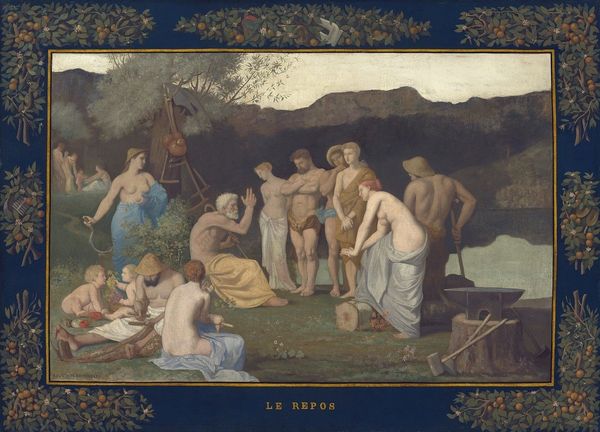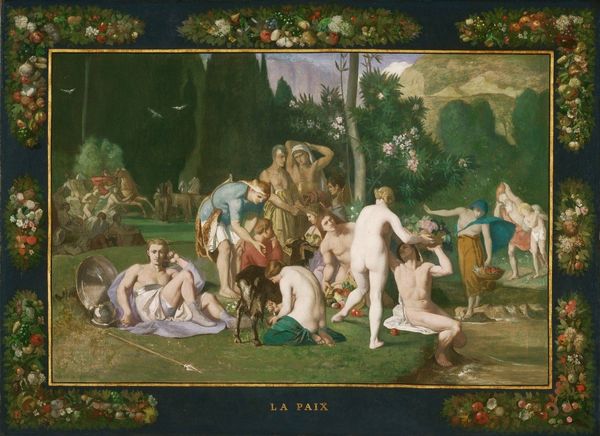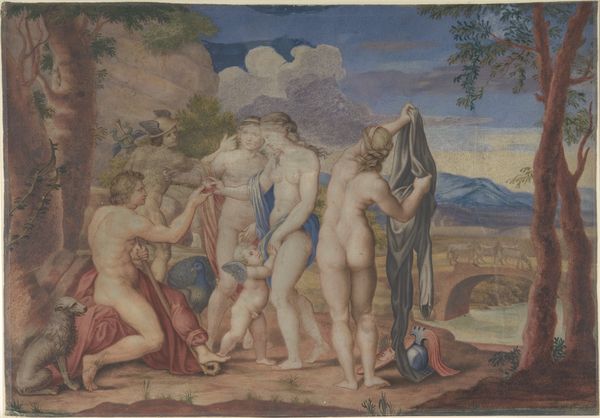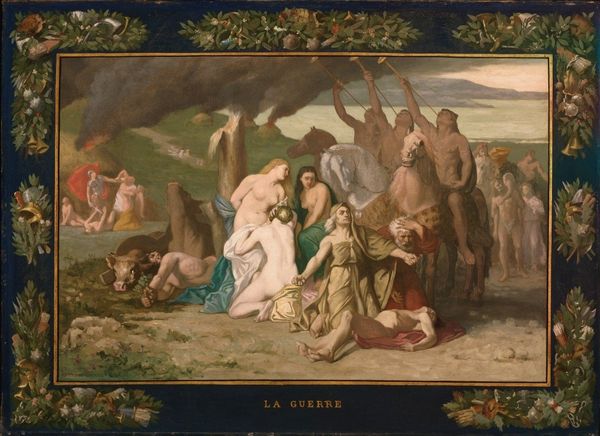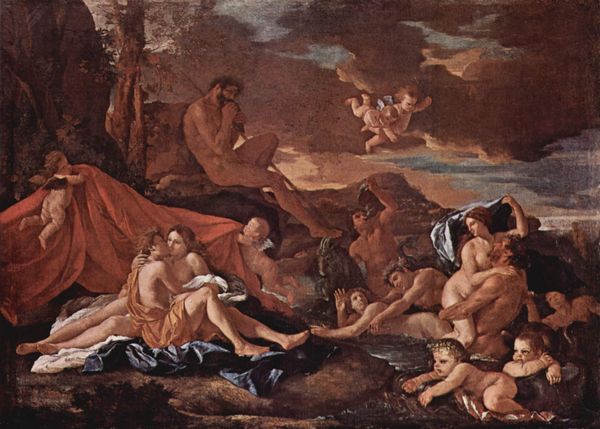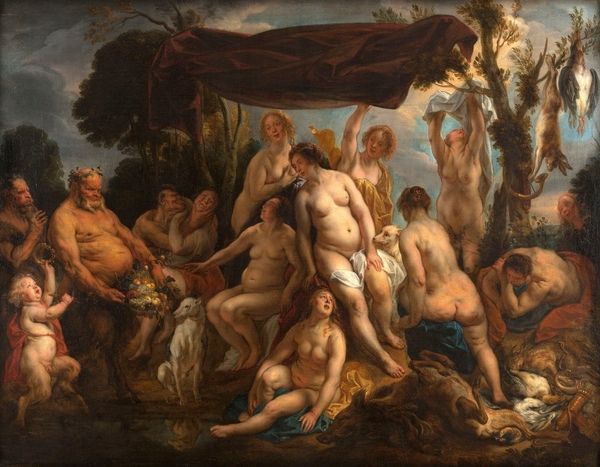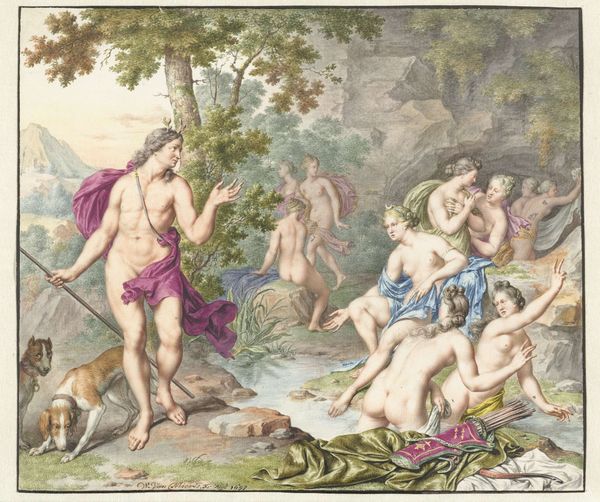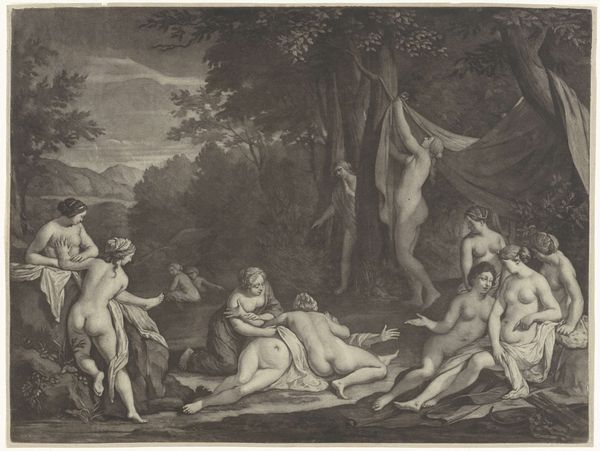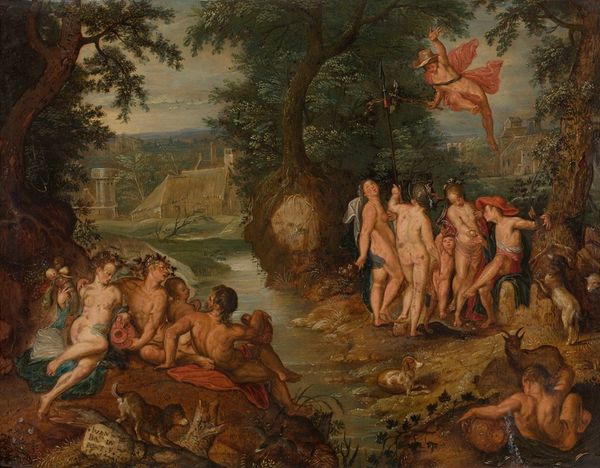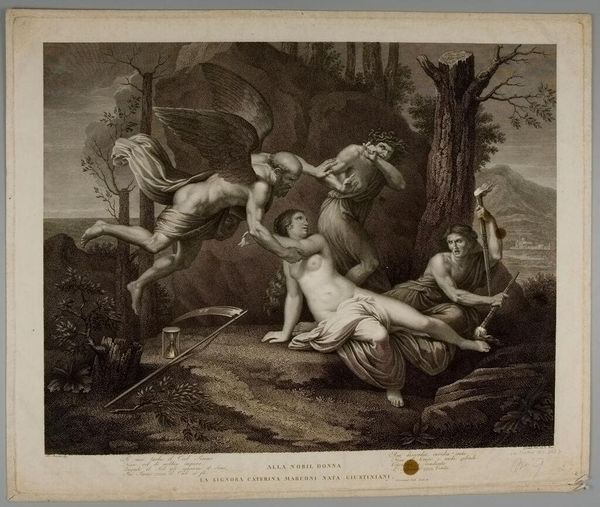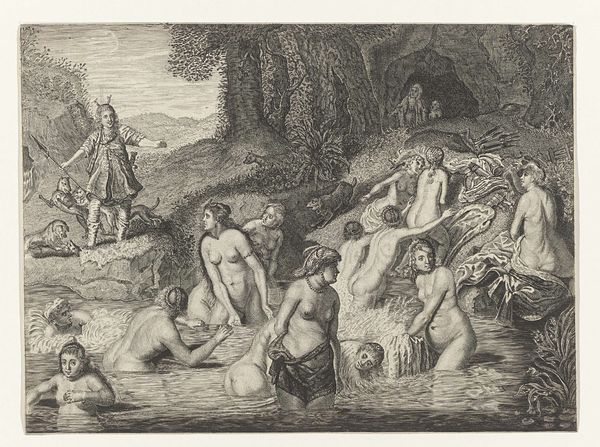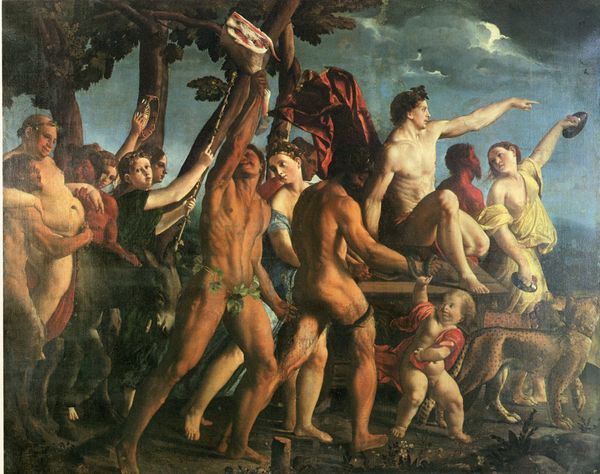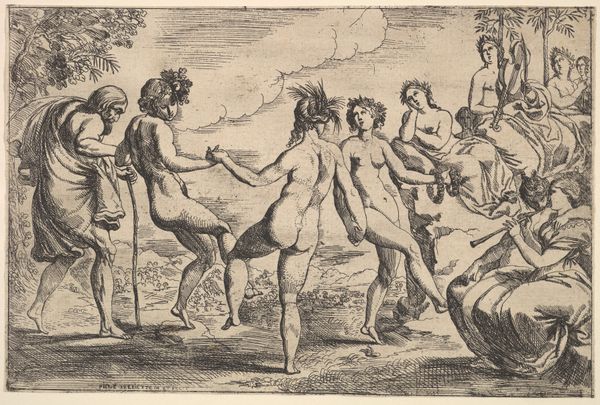
oil-paint, mural
#
figurative
#
oil-paint
#
landscape
#
figuration
#
oil painting
#
naive art
#
history-painting
#
academic-art
#
mural
Copyright: Public Domain: Artvee
Curator: Pierre Puvis de Chavannes created this oil painting, titled "Work," around 1863. The almost mural-like effect is immediately striking. Editor: It feels serene despite the subject matter. Look at how figures labor, almost silently it seems, framed against that distant, misty seascape. There is something inherently idealized in this representation of the value and spirit of collective labor, despite the back-breaking activities depicted. Curator: Consider that it was made using oil paint, yet achieves a very matte, almost fresco-like surface. This was entirely intentional, I believe. The artist carefully crafted this visual effect through his considered use of materials to almost remove any hint of industrial manufacture. Editor: The men all seem eternally youthful, almost allegorical. This emphasis on the male form as laborers connects to ancient ideals. We find images of the classical hero frequently tied to that very male activity of construction and building a new civilization, perhaps like the idea of modern France itself? Curator: The artist trained in the academic tradition and, therefore, "Work" highlights specific types of skilled craft. Take notice of the figure forging metal: a central image that references the pre-industrial forms of material creation. Editor: Note, too, the inclusion of the nursing mother, and what that evokes as an idea of fruitful labor in its most elemental form. There’s a subtle harmony proposed here, suggesting that domesticity and brute labor co-exist within a grand, even utopian vision. What message would Puvis de Chavannes have meant to signal in these figures? Curator: "Work" highlights the fundamental importance of materiality and the slow processes involved in the shaping and making. We also come to appreciate how such depictions are deeply rooted within a social fabric. Editor: Precisely. Ultimately, "Work" creates for the viewer an opportunity to reflect on the complex symbolisms we assign to the common image of manual work.
Comments
No comments
Be the first to comment and join the conversation on the ultimate creative platform.
